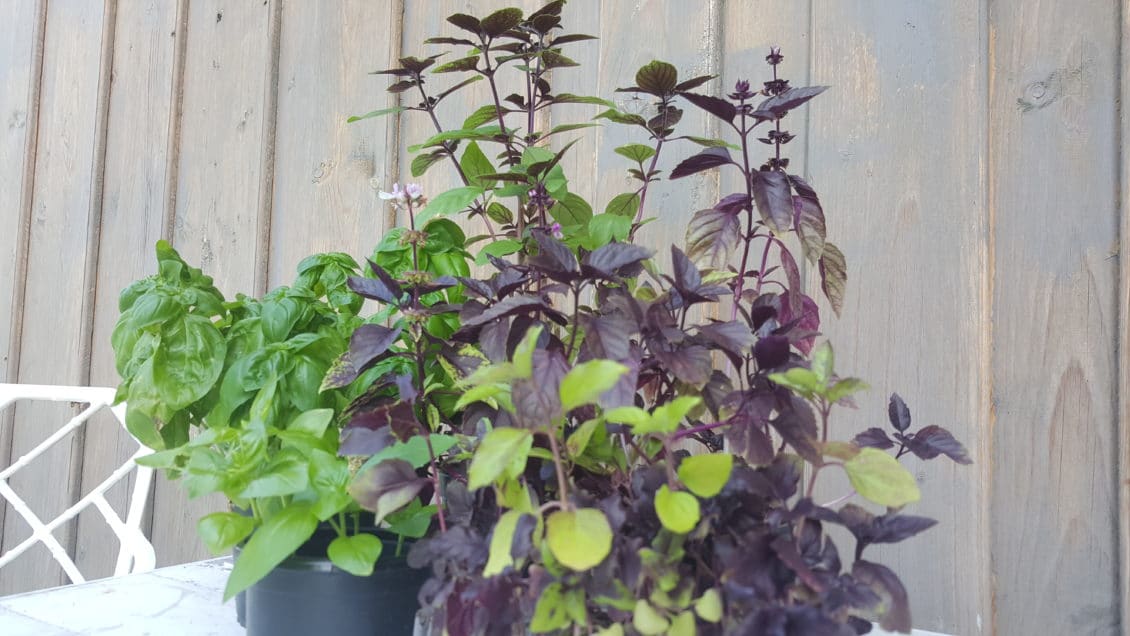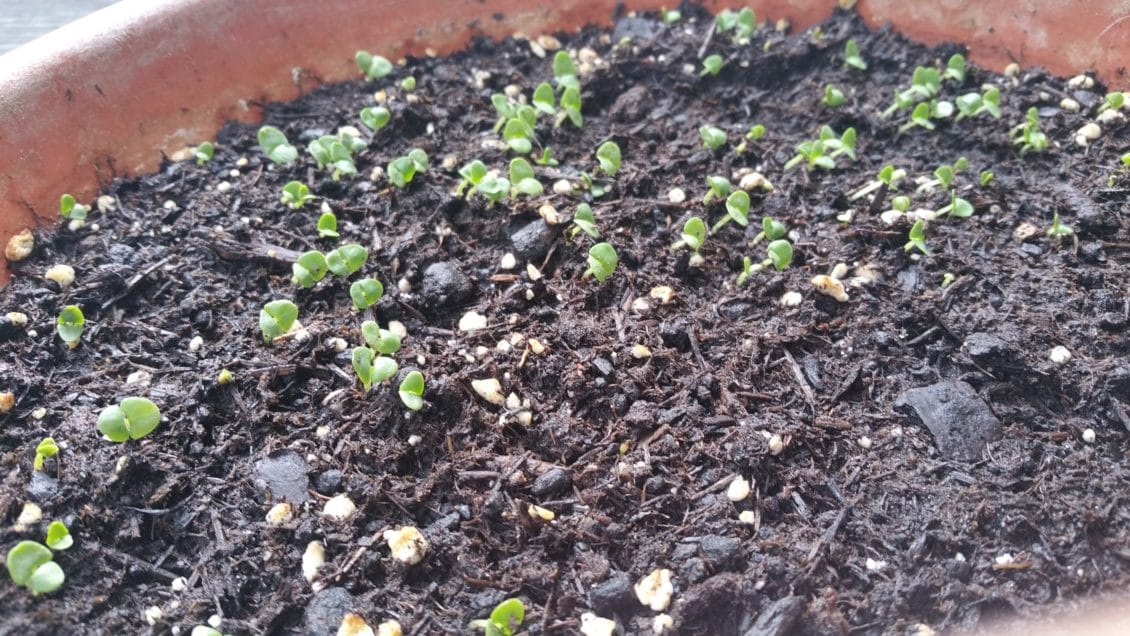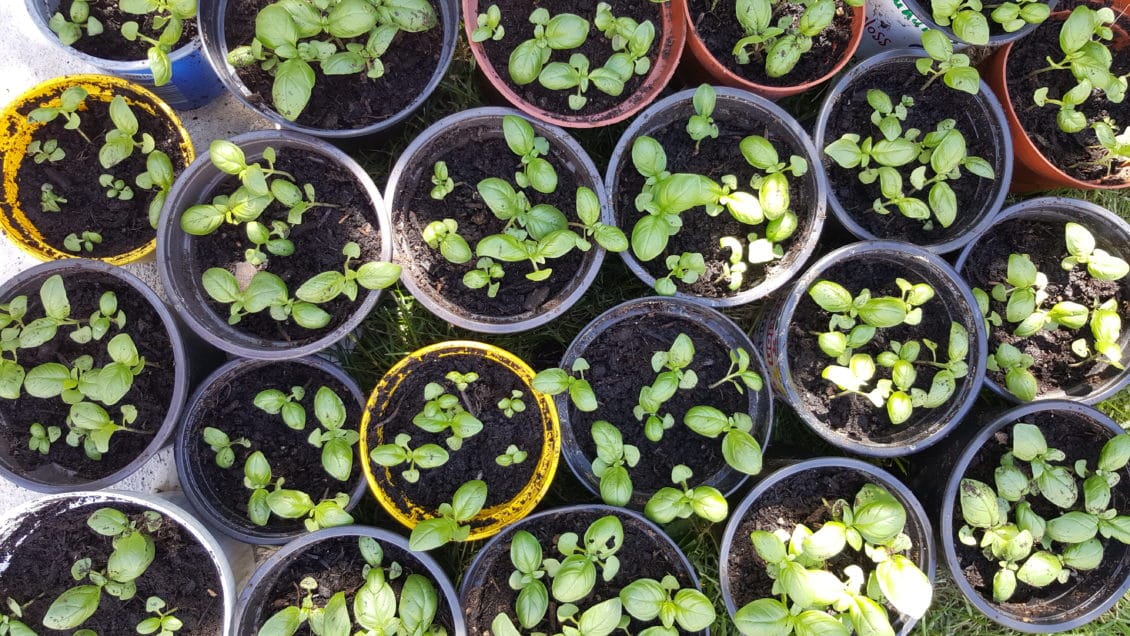Yes, you can plant basil seeds directly in a pot. Choose a well-draining pot, fill it with potting mix, and sow the seeds just beneath the surface. Water gently, place the pot in a sunny location, and keep the soil consistently moist. Basil seeds will germinate, and you can thin the seedlings as needed for proper spacing. Harvest basil leaves regularly to encourage bushier growth, and pinch or prune the tips to prevent premature flowering. With the right care, you can successfully grow basil in a pot from seeds.
Self-seeded basil is not only biologically sound, but more robust and flavorful. Therefore, the effort of sowing in a pot is worth it, because with a few tricks it is done very quickly!
Contents
Sowing basil in a pot: the most important information.
- Basil is a light germinator – it must therefore not be covered with soil when sowing
- Basil needs warm temperatures during the germination period, below 20 degrees the germination rate is low
- Keep the substrate constantly moist during sowing
- When the first two germination pairs have grown, please repot them
- Approximately 8 basil stalks are sufficient for a flower pot with a diameter of 12 cm.
- Step by step instructions for sowing basil
- In principle, you can sow basil on the windowsill all year round. However, since light conditions are more sparse in autumn and winter, spring or summer is advisable.
➡ Basil varieties come in all varieties, colors and flavors:
- From the most famous basil, the “Genovese basil”, with green and slightly curved leaves, which is rich in tradition and strong aroma. This is perfect for pesto.
- Red basil (e.g. “Dark Opal”), which tastes spicy and tart.
- Bush basil “Ocimum basilicum” is characterized by its delicate aroma, which is wonderful in teas or Mediterranean cuisine. Due to its delicate growth, it is well suited for planting in pots.
- Thai basil, e.g. “Siam Queen” provides a distinctive spice with a hint of aniseed flavor. This is ideal for Thai and Vietnamese cuisine.
- Cinnamon basil, e.g., “Cinnamon,” “Cino” and “Orientale” are fragrant with cinnamon and make wonderful additions to tea blends.
- “Tulasi” or Holy Basil is one of the valuable and ancient herbs of Ayurvedic medicine. It is slightly hairy and is characterized by a clove-like fragrance. This aroma goes well with fruits and teas.

Sowing basil seeds
First, prepare a pot with sowing soil. The seeds are generously spread on the surface of the soil and then lightly pressed.
Note: Basil is a light germinator. Therefore, do not cover the seeds with soil!
If the temperatures are right and the seeds have been watered regularly, the seeds will germinate in around 3 to 14 days.

Once the basil seeds have sprouted, they grow very quickly. However, the location should be right: bright and sunny, by no means dark, it must be for the seedlings. If the weather is nice, you can soon put the plants on the balcony or terrace.
Basil grows quickly and briskly. When the second pair of cotyledons is visible, the plants can be separated. About 8 plantlets are completely sufficient in a flower pot with a diameter of 12 cm! There should not be too many, otherwise they will deprive each other of nutrients and light.

Here you can see the small basil seedlings – freshly transplanted. Normal potting soil is quite sufficient for pot culture. They should continue to be watered regularly later. Because: Basil does not like a “dry foot”! Furthermore, it should stand sunny, because the plant enjoys the sun’s rays and thanks it later with a powerful aroma!
If you still make sure when harvesting that you deseed the plants instead of harvesting leaves from the side of them, then you will certainly have long and much joy with the herb!


